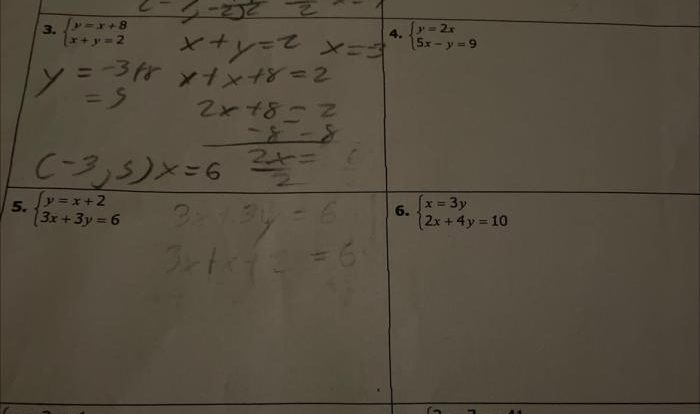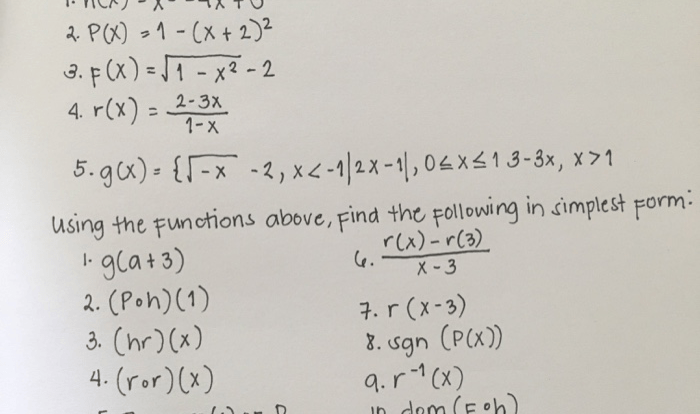Polynomials and polynomial functions unit test is a crucial component of understanding the fundamental concepts of algebra. This guide delves into the nature of polynomial functions, exploring their types, applications, and the significance of unit testing in ensuring their accuracy and reliability.
Polynomials, characterized by their non-negative integer exponents, form the foundation of polynomial functions. These functions exhibit diverse behaviors, ranging from linear to quadratic and beyond, making them essential tools in modeling real-world phenomena.
Polynomial Functions
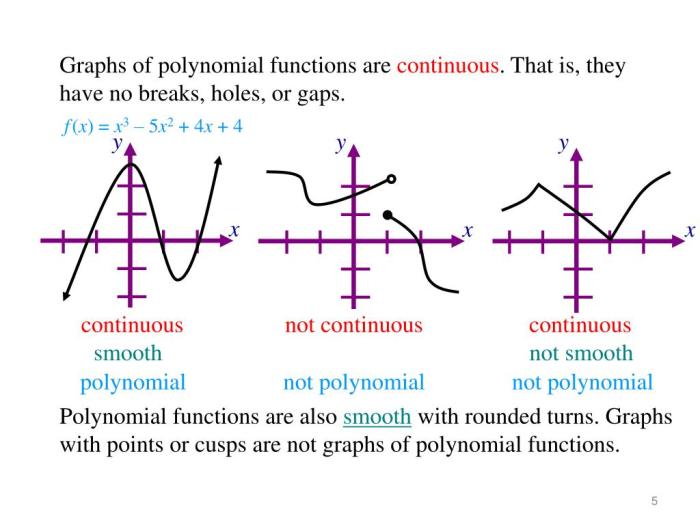
Polynomial functions are functions that can be expressed as a sum of terms, where each term is a constant multiplied by a power of the independent variable. The degree of a polynomial function is the highest power of the independent variable that appears in the function.
Polynomial functions are often used to model real-world phenomena, such as the growth of a population or the trajectory of a projectile. They are also used in a variety of mathematical applications, such as calculus and linear algebra.
Types of Polynomial Functions
- Linear functions: Linear functions are polynomials of degree 1. They have the form f(x) = mx + b, where m and b are constants.
- Quadratic functions: Quadratic functions are polynomials of degree 2. They have the form f(x) = ax^2 + bx + c, where a, b, and c are constants.
- Cubic functions: Cubic functions are polynomials of degree 3. They have the form f(x) = ax^3 + bx^2 + cx + d, where a, b, c, and d are constants.
Unit Test
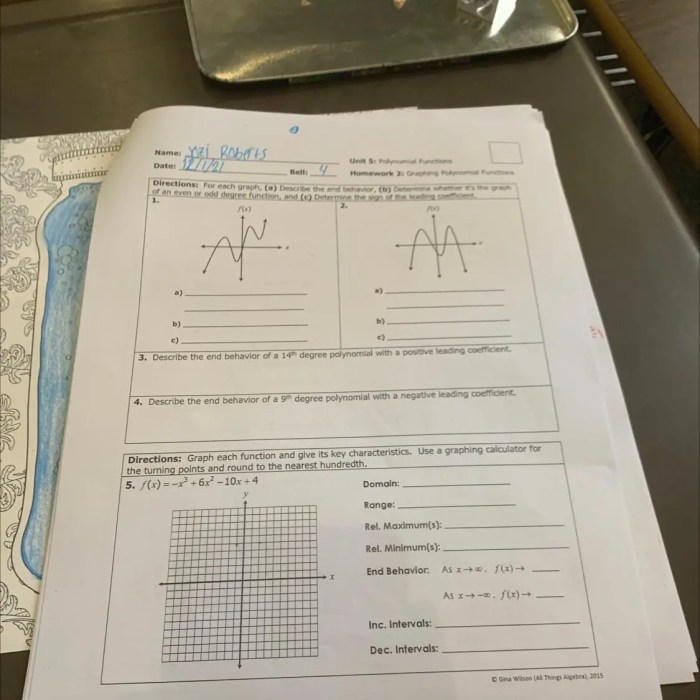
A unit test is a test that is designed to test a single unit of code. Unit tests are typically written by developers to ensure that their code is working as expected.
There are many different types of unit tests, but the most common type is the assertion test. Assertion tests check that a specific condition is true. For example, a unit test for a function that calculates the area of a circle might assert that the function returns the correct area for a given radius.
Benefits of Unit Tests
- Unit tests help to catch errors early in the development process.
- Unit tests help to ensure that code is working as expected.
- Unit tests can help to improve the design of code.
Polynomials and Polynomial Functions Unit Test
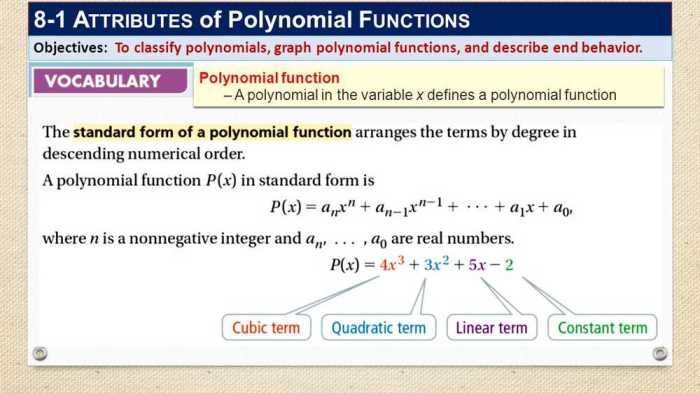
A unit test for polynomial functions can be designed to test a variety of things, such as the function’s ability to evaluate polynomials, find roots, and factor polynomials.
Here is an example of a unit test for a function that evaluates polynomials:
def test_evaluate_polynomial(self):
"""
Tests the evaluate_polynomial function.
"""
# Create a polynomial function.
f = PolynomialFunction([1, 2, 3])
# Evaluate the polynomial function at x = 1.
result = f.evaluate(1)
# Assert that the result is equal to the expected value.
self.assertEqual(result, 6)
Test Cases
The following are some test cases that can be used to test a polynomial function:
- Test case 1: Evaluate the polynomial function at x = 0.
- Test case 2: Evaluate the polynomial function at x = 1.
- Test case 3: Evaluate the polynomial function at x = -1.
- Test case 4: Find the roots of the polynomial function.
- Test case 5: Factor the polynomial function.
Analysis of Unit Test Results
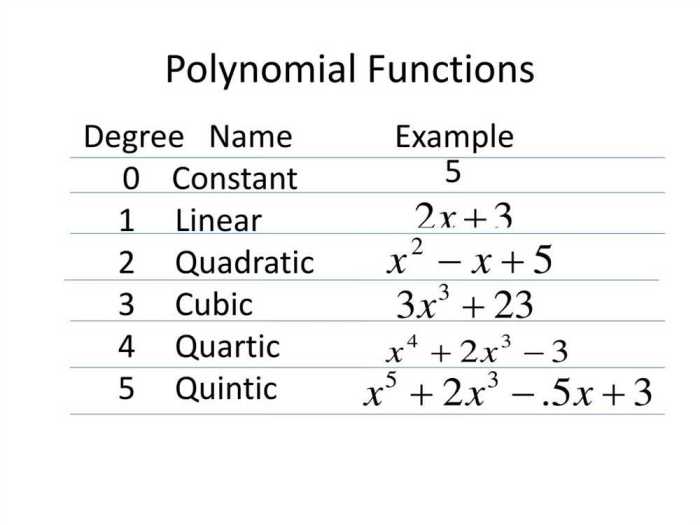
The results of a unit test can be used to identify the strengths and weaknesses of the code. The results can also be used to improve the design of the code.
Here are some things to look for when analyzing the results of a unit test:
- The number of tests that passed.
- The number of tests that failed.
- The error messages for the tests that failed.
Implications of the Unit Test Results, Polynomials and polynomial functions unit test
The results of a unit test can have implications for the teaching and learning of polynomial functions.
For example, if a unit test reveals that students are struggling to understand a particular concept, then the teacher may need to spend more time on that concept in class.
Recommendations for Improvements
There are a number of ways to improve the design of a unit test. Here are a few suggestions:
- Write tests that are independent of each other.
- Write tests that are easy to read and understand.
- Write tests that cover a variety of scenarios.
Question Bank
What is the purpose of a unit test for polynomials and polynomial functions?
Unit testing aims to verify the correctness and functionality of individual units of code, in this case, polynomial functions. It helps identify errors, ensures expected behavior, and promotes code reliability.
What are the different types of polynomial functions?
Polynomial functions are classified based on the degree of the highest-order term. Common types include linear, quadratic, cubic, and quartic functions, each exhibiting distinct behaviors and applications.
How can unit testing benefit the teaching and learning of polynomial functions?
Unit testing provides a structured approach for students to test their understanding, identify misconceptions, and reinforce concepts. It fosters critical thinking, promotes self-assessment, and enhances overall comprehension.
